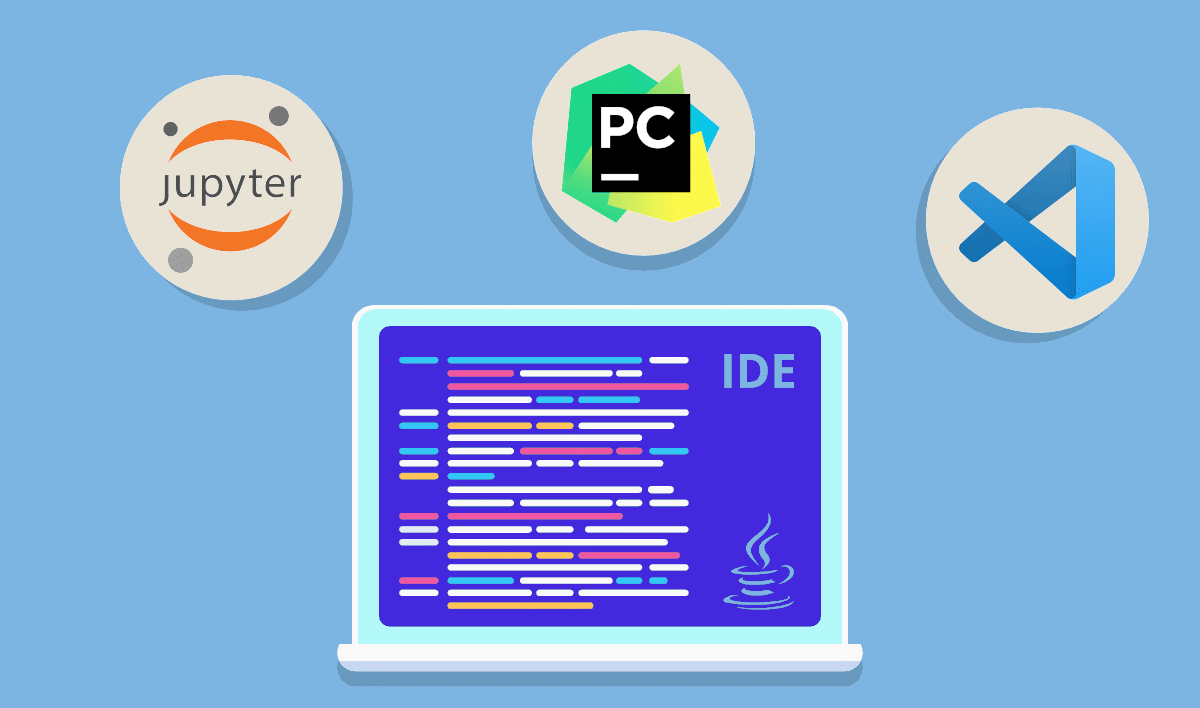Spyder (Scientific PYthon Development EnviRonment) is an open-source IDE for the Python language, specially designed to meet the requirements of Data Science professionals. Find out everything you need to know about this essential tool created by a French developer.
At the dawn of the 2000s, many companies began to use data analysis to make strategic decisions.
The Python programming language was one of the most widely used by analysts and data scientists, but there was as yet no integrated development environment (IDE) specifically designed to meet their needs.
It was French developer Pierre Raybaut who decided to fill this gap, by launching the Spyder : Scientific PYthon Development EnviRonment.
What is Spyder?
This integrated development environment offers a complete set of tools and functions specifically adapted to data science tasks.
It differs from other Python IDEs in its focus on data analysis and visualisation. Its user-friendly interface features an intuitive layout of the various panels.
This makes it easy to navigate and use features. The advanced code editor provides tools such as syntax highlighting, code suggestion and auto-completion to increase developer productivity.
In addition, Spyder integrates popular Python scientific libraries such as NumPy, Pandas, Matplotlib and SciPy. Data scientists can therefore use them seamlessly to simplify their workflow and speed up the development of data applications.
Within this unified environment, users can easily manipulate data, perform complex scientific calculations and create powerful visualisations.
What’s more, Spyder’s interactive console makes it possible to execute Python code in real time. This gives data scientists the ability to quickly test pieces of code, verify results and experiment with new ideas without having to run the entire script.
Initially used mainly by Pierre Raybaut himself and a small group of developers and scientists, Spyder has gradually grown in popularity to become an essential tool for many professionals.
Widely used in the fields of data science, it is also a valuable ally in engineering, finance, scientific research and many other sectors where data analysis and manipulation play an essential role.
Over the years, Spyder has continued to evolve and improve thanks to the contribution of a large and active community. New features have been added, such as interactive debugging, integration with version control systems like Git and advanced code analysis tools.
It is now recognised as one of the most popular IDEs for Python programming, particularly in the field of Data Science. Thousands of scientists, engineers and analysts around the world use it every day.

How can Spyder be used for Data Science?
When it comes to Data Science, professionals working with Python can take advantage of the many features offered by Spyder.
The advanced code editor lets you write code more quickly and supports project management, making it easier to organise and navigate files.
The integration of scientific libraries makes it possible, for example, to manipulate tables with NumPy, perform analysis and transformation operations with Pandas, create visualisations with Matplotlib and use SciPy’s scientific computing functions.
The interactive console lets you run Python code in real time, in particular to test code snippets, check results and explore data interactively.
It supports multi-line input, making it easy to write and execute more complex blocks of code. Interactive debugging features help to quickly identify and resolve errors in the code.
At each stage of execution, data scientists can quickly identify and resolve errors, execute the code step by step and monitor the process. Once again, this saves precious time.
Using code profiling, it is possible to identify the parts of the code that take the longest to execute. Data scientists can use this tool to optimise their programmes and improve performance by identifying bottlenecks and making the appropriate adjustments.
Spyder also makes it easy to manage Python virtual environments. Data scientists can therefore easily create and manage isolated environments for their projects. This is particularly useful when working on several projects with different dependencies.
Finally, integration with Jupyter notebooks gives Data Scientists the opportunity to combine the advantages of a traditional development environment with the flexibility and interactivity of notebooks.
Comparison with other IDEs
There are many IDEs for Python, and each has its own specific features, advantages and disadvantages.
In the field of data science, another popular IDE is Jupyter Notebook. It lets you run Python code interactively and integrate blocks of text, graphics and visualisations.
However, Spyder offers a more complete interface and a more traditional development environment with a dedicated code editor and advanced debugging features.
PyCharm is a more general-purpose Python IDE developed by JetBrains. It offers a wide range of programming features, including debugging, auto-completion, refactoring and integration with version management tools. It is not, however, an environment specifically dedicated to data science.
Finally, Visual Studio Code is an extensible code editor that supports many languages, including Python. It offers great flexibility thanks to its ecosystem of extensions and active community, but also lacks data science tools.
Even so, the choice of IDE depends on personal preference, project type and specific needs. Some may prefer the interactive approach of Jupyter Notebook, while others may opt for the versatility of PyCharm or the flexibility of Visual Studio Code.

How do I use Spyder?
Installing Spyder is a relatively straightforward process. This IDE is compatible with all major operating systems, including Windows, macOS and Linux.
To install it on your computer, start by downloading Python from the official website. Choose the latest stable version according to your operating system, and follow the installation instructions to complete the process.
You can then use the Python package management tool pip to install Spyder. Open a terminal or command line window and run the command “pip install spyder”.
This will download and install Spyder and all its dependencies. All that remains is to launch the IDE by executing the command “spyder” in the terminal or command prompt.
This process can be simplified by using package managers specific to your OS, such as Anaconda, to manage the dependencies and configurations specific to data science.
It is also recommended that you consult the official Spyder documentation for more detailed instructions. Once installed, you can start using it to develop Python applications or perform data analysis.
Conclusion
Thanks to its many advantages, Spyder has established itself as the preferred Python IDE for analysts, engineers and data scientists.
To learn how to master it, you can choose DataScientest. All our training courses include a module dedicated to Python and its data science libraries.
Through our various programmes, you can acquire all the skills required to become a Data Analyst, Data Scientist, Data Engineer, Machine Learning Engineer or Data Product Manager.
You will also learn how to handle Dataviz, data engineering, analysis and Business Intelligence tools, and discover Machine Learning techniques.
All our courses can be completed entirely by distance learning, and lead to a certificate from our partner Mines ParisTech PSL Executive Education. Thanks to our partnerships with Microsoft Azure and Amazon Web Services, you can also obtain cloud certification.
Our government-recognised training courses can also be used to obtain an official certificate and are eligible for funding options. Find out more about DataScientest!
You now know all about Spyder. For more information on the same subject, see our complete dossier on Jupyter Notebook.










